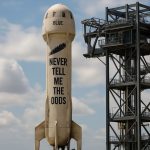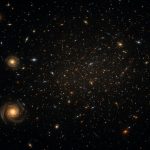James Webb Delivers Record-Breaking Map: COSMOS-Web Reveals the Early Universe Like Never Before
Astronomers unveil JWST’s biggest map, revealing 800,000 galaxies—and secrets of the early universe—in a free, interactive catalog.
- 800,000+ galaxies identified—10x more than expected
- 10,000+ images stitched for largest JWST panorama
- 3 full moons—width of the mapped sky region
- 200+ hours of telescope time: most ever for a single JWST program
Astronomy has leapt into a new era as the James Webb Space Telescope (JWST) revealed its grandest achievement yet: the most extensive and detailed map of the early universe ever captured. This digital masterpiece, crafted through the ambitious COSMOS-Web survey, offers a sweeping, high-definition glimpse back over 13 billion years—unveiling secrets of cosmic dawn in stunning clarity.
The COSMOS-Web project, backed by a global team of nearly 50 researchers, scanned a patch of sky as wide as three full moons. Over the course of its first year, JWST captured more than 10,000 exposures, assembling a cosmic tapestry packed with nearly a million galaxies. Many of these galaxies date from the universe’s mysterious childhood, making this archive a treasure trove for scientists and skywatchers alike.
The free, interactive catalog—now open for exploration—democratizes cosmic research. Anyone with curiosity and an internet connection can plunge into the largest continuous space image the JWST has ever produced. For the first time, students, educators, and amateur astronomers can navigate a field of galaxies stretching across all of cosmic history, thanks to the dedication and ingenuity of the COSMOS-Web team.
What Makes This Cosmic Map a Game Changer?
Unlike previous deep space surveys that zeroed in on tiny patches of sky, COSMOS-Web cast a wider net. The result? Astronomers discovered ten times more ancient galaxies than they ever anticipated. Vivid images reveal how galaxies grew, merged, and evolved over eons—painting a dynamic portrait of cosmic evolution.
The survey’s reach allows researchers to compare galaxies in crowded clusters with those flourishing in isolation. This unparalleled dataset helps answer longstanding questions: How did galaxies form? What role did their environments play as the universe matured? The answers, recorded in both breathtaking images and scientific papers, will fuel discoveries for decades.
How Does the Interactive Catalog Work?
Accessible online, the COSMOS-Web catalog lets users zoom past billions of light-years with a few mouse clicks. Students can trace the journey from nearby spiral galaxies to the universe’s very first structures. Teachers can guide classes through a timeline spanning present day to the heart of the Reionization Era, more than 13 billion years ago.
The team introduced innovative machine learning techniques to analyze this colossal dataset, pinpointing the properties of each galaxy with unrivaled accuracy. New methods model how light spreads across galaxies—combining razor-sharp JWST imagery with supportive data from ground-based telescopes.
Q&A: What Did Astronomers Discover in the Deepest Cosmic Past?
Q: What did COSMOS-Web reveal about the universe’s first galaxies?
Scientists uncovered faint galaxies from the Reionization Era, mapping “bubbles” where newborn stars carved clearings through cosmic fog. Data shows how the earliest galaxies ignited, grew, and shaped the structure of today’s universe.
Q: How does JWST reveal objects invisible to other telescopes?
JWST’s infrared eyes penetrate interstellar dust and reach back to the universe’s darkest times, exposing luminous galaxies that escaped previous surveys using telescopes like Hubble (NASA).
Q: What obstacles did researchers face?
The COSMOS-Web team had to mend unexpected image distortions and noise artifacts, learning new calibration techniques on the fly. Despite these hurdles, JWST exceeded all expectations—detecting fainter and more distant galaxies than models predicted.
How-To: Explore the COSMOS-Web Universe Yourself
- Visit the interactive catalog to deep dive into sprawling galactic landscapes
- Browse timelines of the universe, tracing galaxies as they evolve over billions of years
- Access academic papers and datasets to spark your own discoveries
Find more on cosmic breakthroughs at ESA/Hubble and track the latest missions at NASA.
What’s Next for Cosmic Exploration?
With the COSMOS-Web catalog now publicly available, the race is on for new revelations. Teams worldwide are already mining the data for clues to galaxy formation, dark matter, and the architecture of the early cosmos. As advancements in machine learning accelerate, expect even deeper, more precise portraits of our universe’s infancy.
Step Into the Universe: Discover, Explore, Share
- 🌌 Dive into the COSMOS-Web catalog—peer back 13 billion years!
- 🔭 Compare galaxies’ shapes, sizes, and environments
- 🗂 Download data and read papers to fuel your curiosity
- 🚀 Follow cosmic news with Space.com, NASA, and ESA/Hubble
Ready to unlock the secrets of the universe? Start exploring the most detailed cosmic map ever created—your journey through time and space awaits!
 North Las Vegas & Enterprise Real Estate: Market Expansion, Trends, and Long-Term Projections
North Las Vegas & Enterprise Real Estate: Market Expansion, Trends, and Long-Term Projections  Blue Origin’s Bold Comeback: “Never Tell Me The Odds” Booster to Challenge SpaceX With August Launch
Blue Origin’s Bold Comeback: “Never Tell Me The Odds” Booster to Challenge SpaceX With August Launch  Billion-Euro Bet: UK Supercharges Global Race for Limitless Fusion Energy with Marvel Fusion Deal
Billion-Euro Bet: UK Supercharges Global Race for Limitless Fusion Energy with Marvel Fusion Deal  Dell’s Bold Move: New India Head, Surging AI Partnerships, and a Stock Price Rocketing 24%—What’s Next for This Tech Giant?
Dell’s Bold Move: New India Head, Surging AI Partnerships, and a Stock Price Rocketing 24%—What’s Next for This Tech Giant?  Lucid Group’s Bold Boardroom Shakeup: Is a Turnaround Finally Coming for This EV Underdog?
Lucid Group’s Bold Boardroom Shakeup: Is a Turnaround Finally Coming for This EV Underdog?  JWST’s Largest Cosmic Map Ever Stuns Astronomers: See Nearly 800,000 Ancient Galaxies in Unprecedented Detail
JWST’s Largest Cosmic Map Ever Stuns Astronomers: See Nearly 800,000 Ancient Galaxies in Unprecedented Detail  Russia’s Air Power Shaken: Shocking Satellite Images Reveal Scale of Ukraine’s Latest Drone Strike
Russia’s Air Power Shaken: Shocking Satellite Images Reveal Scale of Ukraine’s Latest Drone Strike  XRP Skyrockets: Wall Street and Asia Rush to Make Ripple Token the Next Big Treasury Asset
XRP Skyrockets: Wall Street and Asia Rush to Make Ripple Token the Next Big Treasury Asset  Spatial Transcriptomics Analysis Platforms Market 2025: Rapid AI Integration Drives 18% CAGR Through 2030
Spatial Transcriptomics Analysis Platforms Market 2025: Rapid AI Integration Drives 18% CAGR Through 2030 